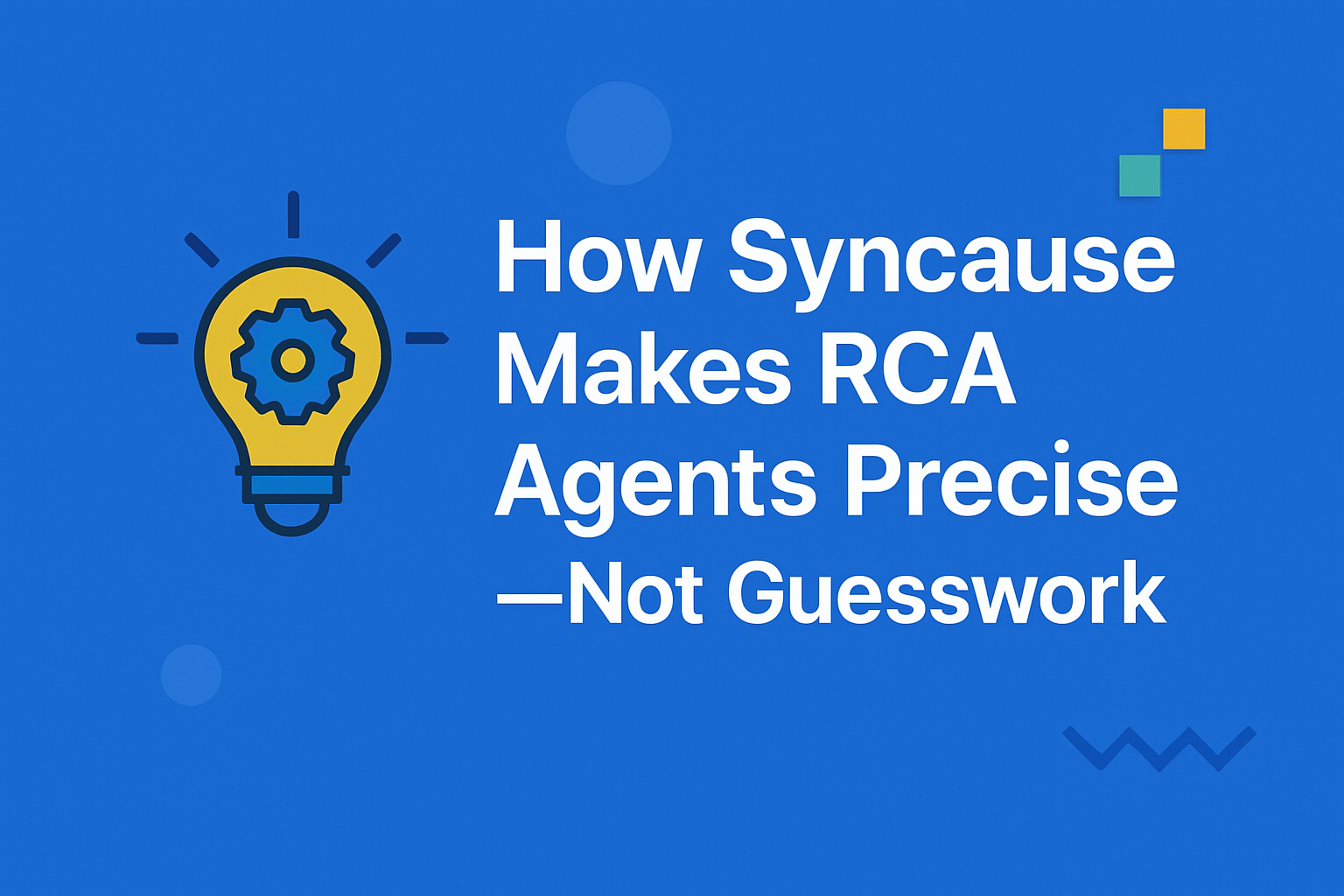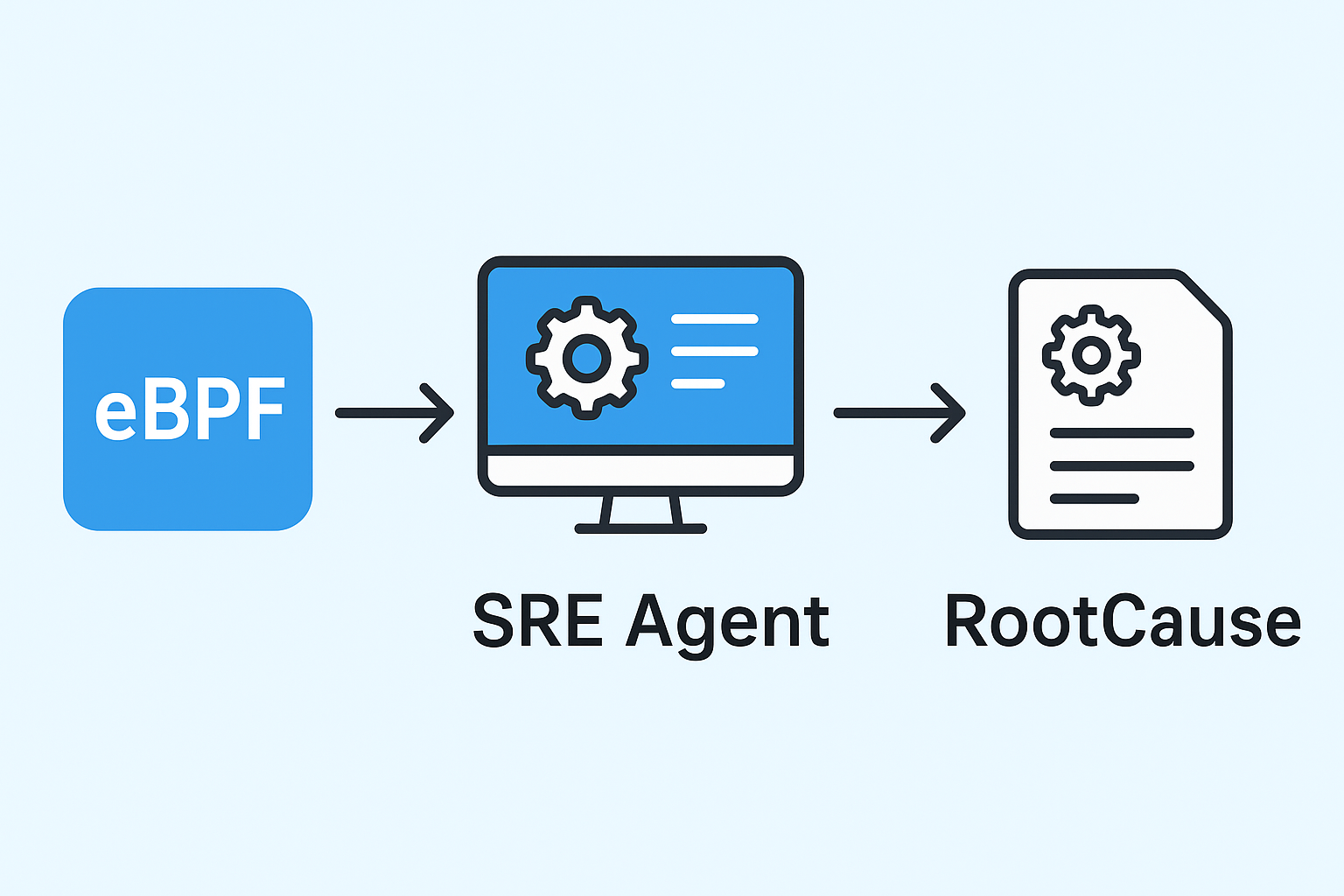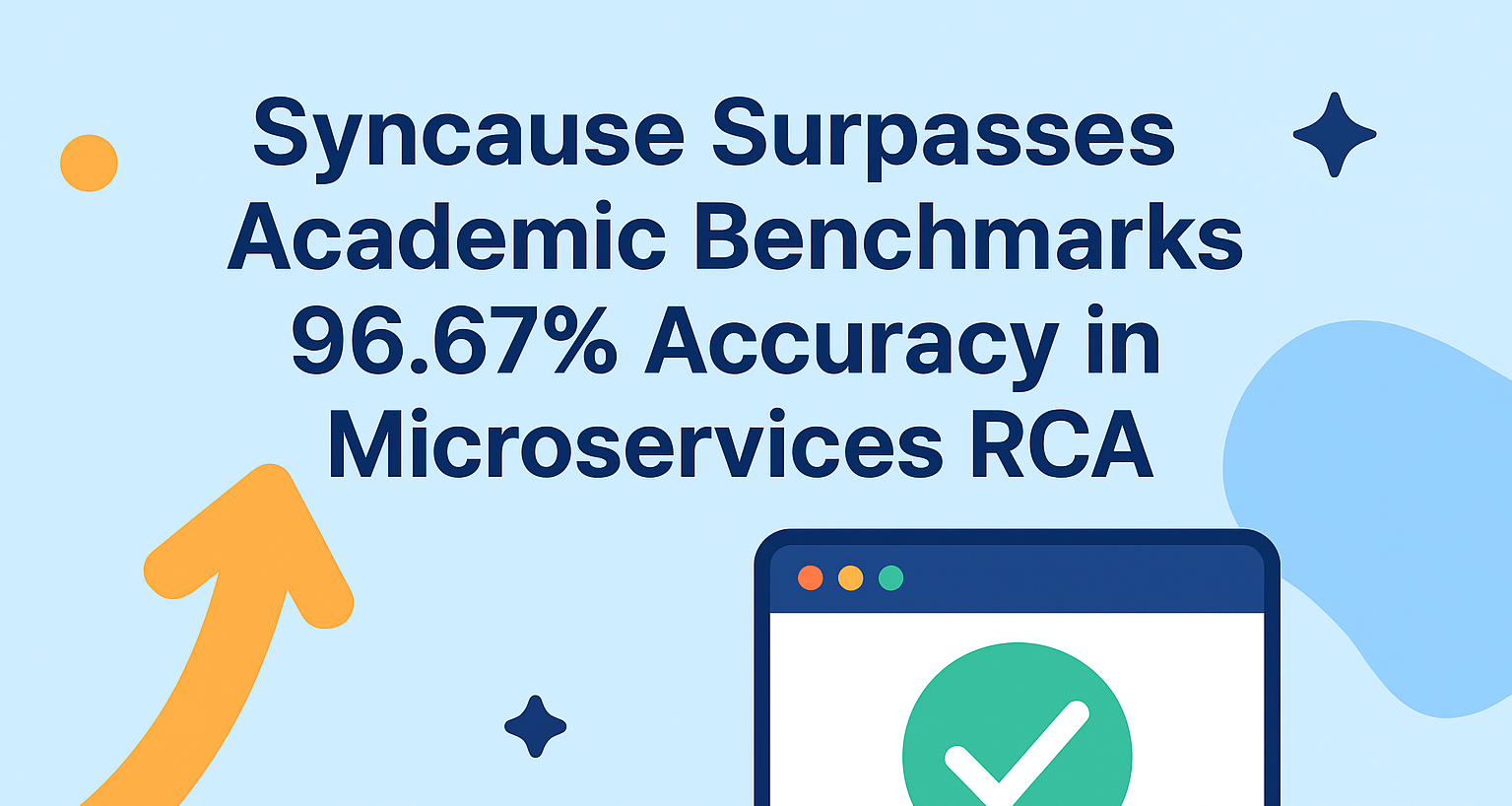Syncause Surpasses Academic Benchmarks: 96.67% Accuracy in Microservices RCA
Syncause’s LLM-powered RCA agent achieved 96.67% accuracy on industry-standard benchmarks — surpassing academic models by over 20%. It finds real faults in minutes, no training required.
In the latest root cause analysis (RCA) tests on the Train Ticket microservices system, Syncause achieved an AC@3 accuracy of 96.67%—this figure represents the highest publicly reproducible level in similar testing scenarios.
AC@k (Accuracy@k) is a metric used in academic research to measure algorithm accuracy. It means: the probability that the true root cause appears in the top
krecommended candidates.
In other words, while other algorithms are still "guessing," Syncause can accurately pinpoint the real fault cause within the top three candidate services.
Root Cause Analysis: A Growing Challenge
In microservices and cloud-native architectures, root cause analysis (RCA) is hailed as the "holy grail" of automated operations.
When a system anomaly occurs, you need to identify the true culprit among dozens of microservices, thousands of metrics, and massive logs.
Over the past few years, academia and industry have explored methods like machine learning, graph analysis, and time-series modeling to automate this process, but real-world issues persist:
- Models require extensive training and tuning in production environments;
- Algorithms lack generalization, making migration to new environments difficult;
- Machine learning results often lack interpretability;
- Offline algorithms fail to adapt to real-time operations scenarios.
As a result, while numerous papers have been published, "truly deployable online RCA systems" remain rare. With the rise of large language models (LLMs) and their reasoning capabilities, a new breakthrough has emerged. Syncause builds an intelligent RCA Agent based on LLMs, making root cause analysis "plug-and-play, real-time interpretable, and verifiable."
Academic Paper Metrics vs. Syncause Real-World Results
We reviewed results from some of the most representative papers in the RCA field:
| Study / Method | Dataset | Metric | Best Accuracy |
|---|---|---|---|
| ONLINE MULTI-MODAL ROOT CAUSE ANALYSIS[1] | Train Ticket | PR@5 (≈AC@5) | ~40% |
| RCAEval[2] | Train Ticket | AC@3 | 70~88% |
| OPENRCA[3] (LLM-based) | Proprietary Dataset | AC@1 | ~15% |
| GALA[4] (Graph-Augmented LLM) | Online Boutique | AC@3 | 60~78% |
All comparison data is sourced from the papers' public results or reproduction experiments.
Syncause reproduced tests on both OnlineBoutique and Train Ticket scenarios, injecting faults such as CPU spikes, memory overload, network latency, and packet loss into different services, then performing the RCA process.
With the aid of our unique eBPF data, AC@3 accuracy reached 96.67% in both.
| Model | Cases | AC@1 Accuracy | AC@3 Accuracy |
|---|---|---|---|
| grok-4-fast-non-reasoning | 30 | 86.67% (20/30) | 96.67% (29/30) |
| qwen-plus | 30 | 90% (27/30) | 96.67% (29/30) |
When eBPF auxiliary data was disabled, relying only on traditional metrics and logs, AC@1 dropped to 60%, and AC@3 to 90%—highlighting the critical role of eBPF data in boosting RCA accuracy.
A clear contrast emerges: Syncause RCA surpasses mainstream research methods in accuracy while remaining online and training-free.
Test cases primarily include high CPU usage, high memory consumption, network latency, and packet loss faults. We continue to expand scenarios and will publicly share ongoing results.
Why Syncause Succeeds
eBPF-Driven Low-Level Observability
Syncause leverages eBPF (Extended Berkeley Packet Filter) technology to capture real-time kernel-level events, such as system call delays, lock waits, and IO blocks, forming more direct causal clues than traditional metrics.
When LLMs access this "real execution path" information, they can more precisely identify the faulty service and resources.
LLM + Observability Data for Causal Reasoning Architecture
Syncause doesn't rely on fixed trained models; instead, it uses LLMs' semantic understanding to perform causal reasoning on multimodal data (Metrics, Logs, Traces, eBPF):
- LLM generates possible root cause hypotheses;
- Syncause verifies these against observed data;
- The reasoning path is visualized for users.
Even if the analysis isn't 100% accurate, Syncause displays the inference chain, allowing users to understand "why the system judged this way."
This "explainable reasoning" transforms RCA from a "black-box model" into a transparent inference process.
Reproducible, Real-Time, No Model Training Required
Unlike traditional machine learning methods that need prolonged training, Syncause is plug-and-play in any environment.
In benchmark tests, Syncause RCA performs online inference, with average single-fault analysis latency < 3 minutes and cost below $0.06.
If you're interested in the implementation principles, feel free to read our technical blog
Advancing Toward Smarter, More Transparent AI SRE
We believe the next evolution in RCA isn't just about higher accuracy, but making the analysis verifiable, comparable, and reproducible.
Syncause Benchmark results are open-sourced on GitHub: 🔗 Syncause Benchmark on GitHub.
Our vision isn't just to build a product, but to drive the industry toward a transparent, verifiable AI SRE Agent ecosystem.
Stay tuned! Future versions will include more:
- Performance comparisons with additional LLM models (Claude, GPT, Gemini, etc.)
- New datasets and more complex distributed system scenarios
- Causal verification and trust quantification metrics
AI is Revolutionizing Root Cause Analysis
System issues will always occur, but analysis methods are evolving. AI brings us closer to "intelligent operations".
Syncause's core isn't to replace engineers, but to make every fault analysis traceable.
Even if conclusions aren't perfect, the process remains verifiable, learnable, and improvable.
If you'd like to verify these results yourself or experience intelligent RCA in your system, feel free to contact us or visit our website for a trial.
References
[1] Lecheng Zheng, Zhengzhang Chen, Haifeng Chen, Jingrui He. 2024. Online Multi-modal Root Cause Analysis. arXiv preprint arXiv:2410.10021.
[2] Luan Pham, Hongyu Zhang, Huong Ha, Flora Salim, and Xiuzhen Zhang. 2025. RCAEval: A Benchmark for Root Cause Analysis of Microservice Systems with Telemetry Data. In The 2025 ACM Web Conference (WWW). 777–780.
[3] Junjielong Xu, Qinan Zhang, Zhiqing Zhong, Shilin He, Chaoyun Zhang, Qingwei Lin, Dan Pei, Pinjia He, Dongmei Zhang, and Qi Zhang. 2025. OpenRCA: Can Large Language Models Locate the Root Cause of Software Failures?. In The Thirteenth International Conference on Learning Representations.
[4] Yifang Tian, Yaming Liu, Zichun Chong, Zihang Huang, Hans-Arno Jacobsen. 2025. GALA: Can Graph-Augmented Large Language Model Agentic Workflows Elevate Root Cause Analysis?. arXiv preprint arXiv:2508.12472.
Related Articles

How Syncause Makes RCA AI Agents Precise, Not Guesswork
Root cause analysis has always been the hardest part of incident response. Traditional observability tools often drown engineers in data without clear direction. Syncause combines AI reasoning with eBPF-powered causal signals to cut through the noise, helping teams restore services faster and with greater confidence.

Revolutionizing AIOps: Why eBPF-Powered Thread-Level Insights Are the Future of Root Cause Analysis
Built on cutting-edge eBPF technology, our AI agent dives straight into the kernel to capture thread-level interactions with system resources. No more guessing—we reconstruct the crime scene with precision, using expert rules and proven algorithms to bridge the "last mile" of root cause analysis.
